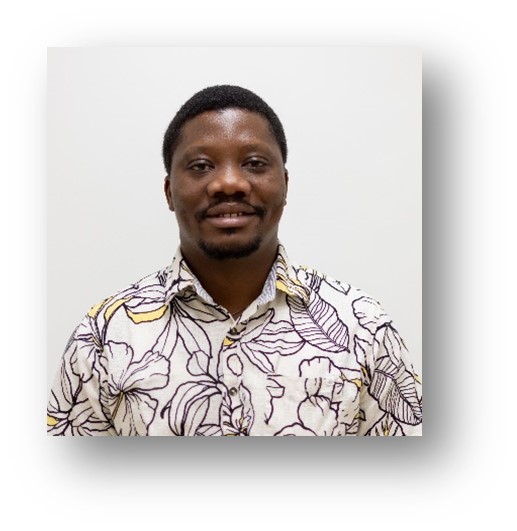
Chemistry Weekly Seminar-Alfred Yeboah
Alfred Yeboah, Student PhD student in the Department of Chemistry, University of Saskatchewan, will present a seminar at 1:30 pm in Thorvaldson 159.
Title
Exploring Chirality and Subphase Influence on Surfactant Films
Abstract
Self-assembled amphiphilic chiral molecules at the air/water interface are of significant interest because of their potential as models for biological membranes and their applications in materials science. Polydiacetylene (PDA), known for its exceptional optical, electrical, and sensing properties, can be formed when its monomers undergo 1,4-photopolymerization in a topochemical photoreaction to form conjugated polymers with an alternating ene-yne backbone structure. This photopolymerization process requires a highly organized arrangement of diacetylene units, which can be achieved through interfacial assembly of surfactant-based monomers through Langmuir and Langmuir–Blodgett (LB) methods. These techniques regulate molecular orientation and packing in two dimensions, thereby facilitating efficient photopolymerization. Incorporating chirality into PDA monomers is particularly promising approach for developing novel organic devices with unique electromagnetic properties.
Our research focuses on the ability to pattern surfactants into micron-scale structures within monolayer films by mixing immiscible hydrogenated and perfluorinated surfactants. Specifically, we have investigated mixed monolayers of 10,12-pentacosadiynoic acid and perfluorotetradecanoic acid (PF; C13F27COOH) SCHEME 1. These components phase-separate at both the air-water and solid-air interfaces. By optimizing mixing ratios in monolayers, deposition, and UV cross-linking conditions, we have successfully created films with fluorescent polymer strands hundreds of microns in length. The perfluorocarbon surfactant plays a crucial role in patterning these systems. Its mutual immiscibility with hydrogenated surfactants drives phase separation, while its stabilizing properties ensure the structural integrity of the film during transfer to solid substrates. These features make solid-film-based applications viable.
The objective of my doctoral research is to develop fundamental knowledge about understanding the influence of the benchmark perfluorinated surfactants on the formation of structured, chiral domains in chiral photopolymerizable based surfactant monolayers, both pre- and post-polymerization. To achieve these goals, I have investigated enantiomerically pure diacetylene functionalized phospholipid 1,2-bis(10,12-tricosadiynoyl)sn-glycero-3-phosphocholine (Diyne PC) as the hydrogenated component of the film and PF as the perfluorinated component . In addition to the synthesis and characterization of a novel new chiral PCDA surfactant and its mixed system with PF is discussed.